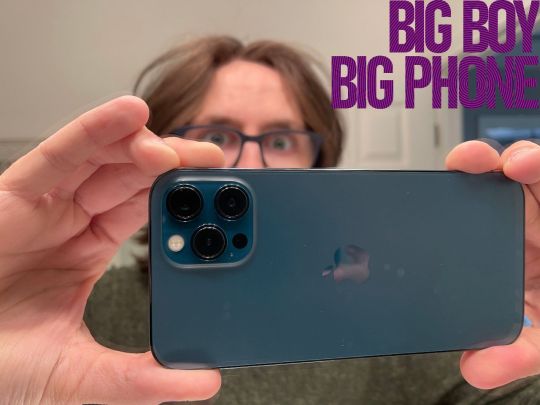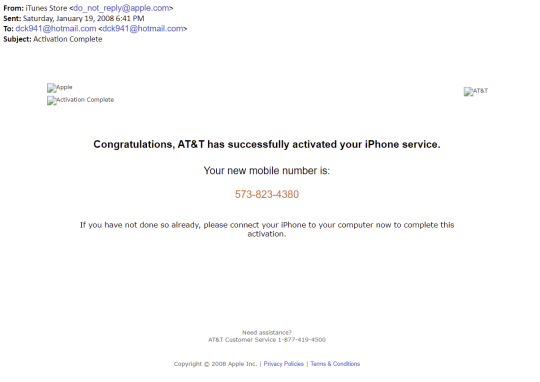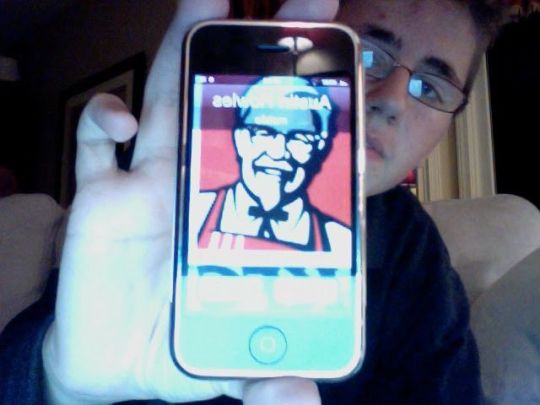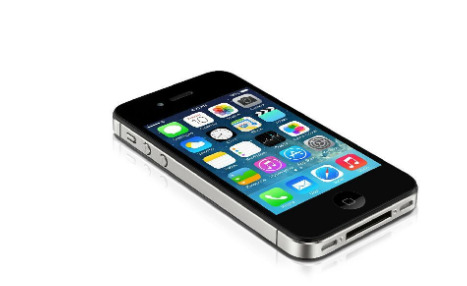#Joshua Topolsky
Text

joshuatopolsky
4 notes
·
View notes
Text






Retro Japanese commercial art
Source: Your next obsession: retro Japanese video game art By Joshua Topolsky on The Outline
#games art#retro gaming#video games#videogames#games stuff#gaming#retro ads#retro aesthetic#retro advertising#90s art#90s aesthetic#japanese games#game magazine
8 notes
·
View notes
Text
The first episode of What Future is here. LISTEN. SUBSCRIBE. New episode drops tomorrow and it is VERY online.
5 notes
·
View notes
Text
The Agony & The Ecstasy of the iPhone 12 Pro Max

Precisely 4750 days ago (give or take a few hours,) my First Generation iPhone was activated on an exceptionally cold Saturday – January 19th, 2008, a little over a week before my 14th birthday. In the time since, Apple has spread over 1 Billion of these devices across this planet. The Internet that gave that first device the i in its name has expanded by a factor of twenty or more. Consumer technology’s future seemed more and more exciting up to a point (I have always said iOS7, but obviously, it varies) when progress suddenly made less and less sense, rendering that future newly and profoundly confusing, and the bearing Western society would be taking there less and less coherent. Many of us are left now in that profound confusion, completely bewildered by anyone and everyone else’s personal utopia.
Myself and my peers’ development as human beings coincided with the development of this metamorphosis in such a way that suggested humor at the spectacle of it all might be the safest way to cope. For myself, I should report, now, at 27 years old – having witnessed the most significant expansion of our species’ intellectual capabilities (and corresponding divisions) in its history just since 8th grade – that the humor has run entirely out. Determining what remains has been my own prime interpersonal struggle as of late, but I can at least tell you for certain that whatever it is exists in a more absolute state of inevitability than I could have ever imagined possible as I watched some AT&T employee crumple the clear plastic wrapping away from that most extraordinary matte black rectangular box containing my very first iPhone.[^1]

It was an 8GB first-generation. I named it “Bob Geldoff” because I had absolutely no idea who that was,[^2] which I found hilarious. In the (admittedly unsolicited) self-psychoanalysis I’ve ended up in, these past few months, I would suggest that handset remains the single most powerful symbol of an era in my life when the future of technology felt absolutely enamoring. We were going to get to try everything just because we could, and it was going to make everything better. I watched and read the forming of the *Gadget Blogger- generation – Joshua Topolsky, then Joanna Stern, Paul Miller, Nilay Patel, Dieter Bohn, and others, all led by their seniors Walt Mossberg and Kara Swisher – who would eventually form the establishment technology media as it stands right now. On early tech YouTube, my friend and I worshipped SoldierKnowsBest, iJustine, and Jon4Lakers from our MacBooks – Mark Watson, Justine Ezarik, and Jon Rettinger, respectively – who managed to convey with their embedded iSight cameras the sort of Consumer Tech Hype which can become addicting, especially to those young minds searching for a simple framework from which to understand existence and time.
youtube
https://www.youtube.com/watch?v=4HX6R88QZB0
Big words for a cellular telephone review, eh? I realize I’ve already lost many of you, but I do not despair, for
“This *really is- my last iPhone.”
This is the last sentence of my very sentimental iPhone 8 Plus review from May, 2018, in which I bemoaned Apple’s decision to finally retire the basic hardware configuration which had defined the marque’s first ten years, citing my “loyalty.”
In the past half year, I have come to realize that the device which I now hold in my hands - which I cling to, in fact, at all hours and completely without reason - is the absolute manifestation of everything my 14-year-old, first generation iPhone-adopting self could have possibly dreamt of in its future. Unlike that iPhone 8 Plus review - which was a very sentimental reflection on “the last iPhone” designed in the configuration I had understood for a decade and therefore accompanied by a bunch of foolhardy lamentations *bitching- about the iPhone X - this review will be one of sincere wonderment regarding the thing, itself, first, before taking flight into a wider critique of our current consumer technology ethos.
Taken out of 2021 context and placed in my 14-year-old hand in 2009, this Pacific Blue iPhone 12 Pro Max would not have disappointed me in the slightest. By that, I mean… It is as unimaginably capable as I would have imagined. It eclipsed any compromising capability distinctions from desktop computers long ago, cast its tethers to the Old Ways off, and ascended into what I would have regarded as a true p o w e r o b j e c t. On this cellular telephone, I have run complex commands in a full Linux shell, captured massive 4K/60fps video files of myself falling over, played console-class video games and *streamed them live in HD- simultaneously, archived entire web domains locally, and on and on… In fact, this iPhone has done the majority of these measurably better than any desktop computer I have ever owned.

All of these capabilities contained within a form factor that has been smushed, you might say, in comparison to that First Generation device[^3]. It has slimmed by nearly half a centimeter (4.2mm,) widened by 17.1mm, and lengthened by 45.8mm, though it’s also gained almost 60% in mass - from 135 to 228 g - which I personally found the most surprising statistic. In fact, it invalidates literally years of my suppositions that increases in newer iPhones’ apparent resistance to drop trauma over time was certainly because they were getting lighter,[^4] but no… *Heft- is luxury… *Excess- is a point of pride… *Sensation- has become the upmost ideal of hardware interface design.

These past months, I have indulged myself thoroughly in the company of this long-dormant *Handset Enthusiast- part of me - this dork who seems to be infinitely enchanted by conversations vaguely about innovation in a business which seemed almost inevitably alienating of anyone who didn’t care enough about some unexotic discussion in the tech community to a demonstrably obsessive degree. Again, the experience has screamed over and over again that I am extremely vulnerable to high computing capability. In other words, the more a computer can do, the more I want to see what I can do *with- it. For a very long time, iPhone OS' locked downness actually helped me tremendously in this regard.
about the tools we use to make things: how we learned to make them, how we learned to learn to use them, and how we learned to teach others - identifying it *truly- and meditating

It is a guarantee that no matter where I may go or who I may find myself unwittingly surrounded by, the option to escape into my own Computing World *in its entirety- and more - not just an abbreviated, *Mobile- facsimile - shall from now on and forever be with me, there against my right asscheek, just a grab and a glance away. Like The Holy Spirit was it pledged and prepared to stay by my side.
down to a depth of six feetYa know, I’m actually astonished by how much of this ritual *hasn’t- changed.
[1] I may actually be the most qualified person on Earth to reflect on this subject, given that I represent the very first microgeneration to have smartphones for all of our adult lives. (Just barely.)
[2] I still have no idea who Bob Geldoff is.
[3] Unfortunately, my own First Generation was lost during my Portland Debacle in 2017.
[4] Both public and private, unfortunately.
0 notes
Photo

The Story: The Death of the Internet
The Writer: Joshua Topolsky
Have a nice day.
#death of the internet#internet#digital life#cloud#the outline#joshua topolsky#facebook#net neutrality
1 note
·
View note
Video
youtube
tremendo banger
0 notes
Text
'Destroy the NRA': Liberal reaction to Florida shooting proves need for mental health reform
‘Destroy the NRA’: Liberal reaction to Florida shooting proves need for mental health reform
Anti-gun leftists wasted no time politicizing Wednesday’s tragic school shooting in Florida with all the usual rhetoric blaming everyone except the suspect, identified as Nikolas Cruz, a troubled 19-year-old who, reports say, followed “Syrian resistance groups” on social media. Joshua Topolsky, the editor and CEO of The Outline, for example, issued a call on Twitter for the destruction of the…
View On WordPress
6 notes
·
View notes
Text
We are in the midst of an information crisis, and no amount of algorithmic tweaks, purges of bots, or surveys of users is going to fix this problem. Social media in its current state is built on the premise that popularity — virality — is the core signal of value in its marketplace. When stories travel fast and are praised widely, the algorithm blesses them up to more and more users. Virus is the right word for this behavior — a sickness that spreads indiscriminately and quickly, with little regard for the health of its host. In this case, the host is our sense of truth, our faith in facts, and our shared narrative about what is happening in the world. The host is very ill. As much as Facebook’s vice president of ads would like you to believe this is just about a few bad apples who are paying to play, it’s actually about the foundation of how their business functions and thrives.
Joshua Topolsky, "We Are in an Information Crisis"
3 notes
·
View notes
Text
It's silly how surprised I was to find @joshuatopolsky's most recent commentary on Mastodon to be the most reasonable, informed one I've heard out of the buzz, yet. Aside from tossing in the concept that Mastodon/the fediverse is related to Web3 in any sense but the abstract of a decentralized internet, I found it almost well-considered!
Here's an automated, entirely unedited transcript of this bit and here's the episode from which it is sourced.
0 notes
Text
The New Motorola Razr: Discovering Poor Execution from the Start
On February 5, Input Magazine, Editor-in-chief, Joshua Topolsky describes how a Motorola representative he spoke with claimed that the Corona virus in China was a contributing factor to the delay of his new Razr phone. Just as soon the Razr became available online for pre-orders on January 26, problems with product shipment started. The phone was not sent to any of the major tech critics for product review prior to the February 6 release date. Ironically, two Razr’s were discovered for sale on eBay. By February 1, two more phones appeared online for review by CNET and Consumer Reports. Motorola’s PR team did not have a game plan as to how to allow critics to evaluate the Razr before it launched. There was skepticism if permission to evaluate the device was simply poorly planned or somehow deliberate for the sake of getting it quickly on the market.
And Then Came the Air Bubble
By February 16, Input Senior Review Editor, Raymond Wong, describes how his boss Josh had periodically used the Razr for a week before he received. Raymond had only been in possession of it for less than 24 hours. During that time, he was able to capture 23 photos in retro mode. By 3:43pm the following afternoon, that’s when things began to fall apart. Raymond stated “…a giant horizontal air bubble appears out of nowhere…” and the lamination and display panel split. Raymond continues to describe how the flimsy, peeling plastic OLED display was unnerving and was “…warped from hinge to hinge with the top layer raised like a poorly applied screen protector.”
Cold Weather Hurts Razr
Raymond, completely puzzled as to how this could have happened, can only surmise that the 28-30-degree weather played a role while he took pictures during his early afternoon train ride from Queens to Manhattan. The Razr had peeled at the bend even though it was never exposed to water nor was it dropped. This permanently damaged the Settings app.
The Big Take-Away
All signs are pointing down for the new Motorola Razr. The company over promised and under delivered. This was not handled well from the beginning at the corporate level. The intent to bring back the once loved feeling of the original Razr without flaws unfortunately fell flat. If there are future plans to come up with an improved model, it must be put through rigorous benchmark testing before the PR team can wave their magic wand on a perfect media pitch prior to jazzing up people like me. Fingers crossed.

Topolsky, Joshua. “The Motorola Razr Launch Is an Unmitigated Disaster.” Input, Input, 5 Feb. 2020, www.inputmag.com/tech/the-motorola-razr-launch-is-an-unmitigated-disaster.
Wong, Raymond. “Our Motorola Razr’s Display Is Already Breaking and Peeling At The Fold.” Input, 16 Feb. 2020, www.inputmag.com/tech/our-motorola-razrs-plastic-display-is-already-breaking-peeling-at-the-fold
0 notes
Text
The Outline: Hubris, bad timing and the curse of venture capital
Note: This is something I originally published at the Columbia Journalism Review, where I’m the chief digital writer
It began, as so many similar stories do, with a series of tweets. On September 4th, a writer at The Outline, a news startup founded in 2016 by Joshua Topolsky, posted that she and several of her colleagues had suddenly been laid off, leaving the site with no staff writers whatsoever. This was met by expressions of sympathy from others in the media, but also an element of disbelief. After all, hadn’t The Outline just announced a $5 million round of funding in May? Where had all that money gone? Some writers, angry at what appeared to be another VC-backed startup taking advantage of freelancers, published an open letter saying they planned to boycott the site.
The Outline may have been well-funded at one point, with a reported valuation of more than $20 million, but by last month it was anything but, according to sources with knowledge of the company’s financial situation. The money announced in May was mostly gone before the news about the funding round was released, and the site was trying desperately to engineer some kind of alternative financing—including, at one point, reportedly entering into talks with owners of the New York Observer about injecting some capital into the company, in return for The Outline taking over management of the ailing magazine (the talks never went anywhere).
When The Outline launched two years ago, it seemed full of promise. Topolsky was a former digital editor at Bloomberg and one of the co-founders of tech news site The Verge, which was acquired by Vox Media. He raised $5 million from a series of venture capital funds, several of which had also invested in BuzzFeed and Business Insider, in order to start what he described as an alternative to media as usual, a site that would fix what was wrong with a broken industry. Instead of focusing on raw traffic, he said, The Outline would be more focused and authoritative about key topics, and its advertising would be higher quality and therefore more effective.
So how did this alternative media venture wind up becoming just as broken as the traditional outlets it hoped to displace, laying off dozens of staff in round after round of downsizing? The answer is partly editorial ambition (or hubris) and partly poor timing, and provides yet another example of how venture capital funding and building a sustainable digital media business rarely go well together.
When The Outline launched, it had about 10 full-time staff, including veteran writers and editors like Aaron Edwards from BuzzFeed, Adrianne Jeffries from Vice Media’s Motherboard site, and Amanda Hale from Talking Points Memo. The site soon had a four-person video team, and added a number of high-profile writers who worked out of its office in a trendy neighborhood of Manhattan. Its innovative website, which often looked and functioned more like a mobile app, got largely positive reviews, and there were high hopes for its customized approach to advertising. Sources close to the company say the board encouraged Topolsky to spend more and expand more quickly, assuring him there would be no problem in finding more financing in the future.
By late last year, however, the media environment had changed dramatically. Vice Media and BuzzFeed were said to have missed their revenue targets for the year by as much as 20 percent, and Mashable—a former digital media superstar—was forced to sell itself for a fraction of its previous valuation to Ziff Davis, which immediately laid off 50 people. The combination of a tight advertising market and the increasing dominance of Facebook, as well as the lackluster performance of video, meant sharply lower traffic and revenue numbers for just about everyone in the business.
At first, The Outline seemed to have dodged most of these bullets. In April, Topolsky said the site’s ad strategy was working so well that clickthrough rates were 25 times the industry average. Then he announced a new round of funding in May, another $5 million from existing investors and several new funds. In a Wall Street Journal interview, Topolsky said the site (which had grown to have more than 30 staff and 3 million unique visitors a month, according to internal analytics), had kept its funding round small because it didn’t want to suffer from inflated expectations.
According to a number of sources, however, this wasn’t entirely true. The site very badly wanted to raise more than $5 million—and in fact needed to do so to keep up with its burn rate—but had failed to find enough investors willing to sign up. Also, the announcement didn’t mention that most of the funding had come in months earlier, and had already been spent. So even as it appeared to be flush with cash, the company was actually getting close to running out of money. In June, two writers were laid off, although Topolsky initially made it sound as though they had been let go primarily because of performance issues. He later apologized for expressing himself badly (his tweets have since been deleted) but maintained the site was healthy and expanding.
So what went wrong? Even those who express admiration for Topolsky and his vision say The Outline’s launch was too ambitious by far, and that the company raised too much money too early in its life-cycle. Instead of trying to build an audience and a business slowly and then look for funding to expand, the site came out of the gate with dozens of staff and lofty (and correspondingly expensive) ambitions.
The video team, for example, was described by a number of sources as an expensive mistake, one that did very little for several months other than cost the company a lot of cash (most of the team were hired before The Outline had officially launched), and was too advanced for a small startup. The entire team was laid off in December, followed by two writers in June, then two more writers, several developers and support staff two weeks ago. The site, which had 30 employees at its peak, now has barely half that, and no staff writers at all. One source says the managing editor is now doing at least one other job, and editors have been told that they also have to write.
Meanwhile, the decision to carry only customized advertising might have ultimately been the right one, but media industry insiders say it also locked The Outline into a very expensive model right out of the gate, since customized ads are time-consuming and labor-intensive. And while its clickthrough rate may have been higher, it didn’t have enough clicks to justify the kinds of ad campaigns it wanted to attract.
One former staffer told CJR they left not because they didn’t agree with Topolsky or his vision, but because they felt as though the whole enterprise was on thin ice, and that they might lose their job at any moment. Topolsky, however, maintains the recent cuts were a prudent move designed to get The Outline closer to profitability, which he says it is on track to achieve. “We have to think about the future of the business,” he said in an interview, “and proving profitability sends a really strong signal to the market about potential for future growth.” He said the original plan, which was to launch The Outline and then eventually expand by launching a series of other media brands, is still very much alive, and that he is “cautiously optimistic” about the future.
“We are not a monolithic corporation,” Topolsky told the Observer. “We are not executives in corner offices hoarding money. We’re journalists trying to make something good, and making hard choices to keep a business alive so we can fight another day.”
The Outline: Hubris, bad timing and the curse of venture capital was originally published on mathewingram.com/work
0 notes
Quote
It's been a long, strange trip getting here, but I'm exactly where I should be.
Joshua Topolsky
0 notes
Text
i feel like the outline exists in some kind of weird half-formed space as a news publication. like literally had no idea it existed until i happened to look at joshua topolsky’s wikipedia page which linked it
4 notes
·
View notes
Text
iPhone本命年:黃牛大發橫財,iPhone 4當年這麼火
2010年6月7日的加州舊金山,身穿黑色高領毛衣和牛仔褲的蘋果創始人、時任首席執行官史蒂夫·喬布斯(Steve Jobs)走上蘋果世界開發者大會(WWDC)的舞台。他先是介紹了當年早些時候推出的iPad,介紹了將要對平板電腦進行的軟件升級。
訪問:
蘋果在線商店(中國)
原標題:iPhone本命年2:黃牛大發橫財,iPhone 4當年這麼火
作者 | 辰辰
出品 | 網易科技《知否》欄目組

隨後又聊了幾句蘋果應用商店的信息。接下來喬布斯轉向了當晚的重頭戲。他說這款手機有超過100多項新功能;這款手機採用了全新的工業設計、全新的攝像頭和全新的視網膜顯示屏。這就是iPhone 4。

iPhone 4是蘋果問世以來的最大飛躍,是蘋果歷史上最成功的一款手機,也是手機歷史上極具里程碑意義的一款產品。這款手機之所以是公認的經典,不僅因為這是蘋果第一款硬件設計真正超過軟件功能的手機,也是喬布斯生前的最後一部得意之作。如果說iPhone重新定義了手機,那麼iPhone 4就重新定義了iPhone。對於“再一次改變一切”的宣傳語,iPhone 4當之無愧。
領先的工業設計:首次採用前後玻璃材質
iPhone 4問世的2010年還正處於智能手機的發展初期,三星HTC摩托羅拉等初涉智能手機的安卓廠商還不知道如何做手機,許多用戶都還用著諾基亞的塞班機。而iphone4的問世驚艷了全世界,讓人們知道原來智能手機可以是這樣子的。雖然iPhone 4繼承了圓形Home鍵和極簡設計理念,但前後玻璃+金屬中框的材質一改此前的塑料機身質感,讓其在各種旗艦智能手機中特立獨行。蘋果公司負責設計的高級副總裁喬尼·艾維(Jony Ive)才華爆棚,打造出了極具設計美感的造型,在發布會亮相的時候甚至引起了眾人的陣陣尖叫。

為了打造質感出眾的外觀,iPhone 4還創造性嘗試了手機天線和邊框合而為一的設計,側面的不銹鋼邊框包含了天線、藍牙、Wi-Fi等功能,這麼一來不但解決了手機天線問題,也讓iPhone 4整體厚度壓縮到9.3毫米,成為當時市面上最薄的手機之一。
此外iPhone 4還一改初代iPhone以來的屏幕短板,採用了視網膜顯示屏。這塊3.5英寸屏幕有著960×640的分辨率,PPI達到326,在視覺和功耗上做出了近乎完美的平衡。
工業設計上的成功,讓iPhone 4站上了2010年手機行業的製高點,也讓前後玻璃+金屬中框這一經典設計風格成功引領行業潮流。它開啟了手機行業對玻璃材料的使用,儘管不如金屬和塑料耐摔耐磨,但玻璃對手機質感的提升和材料的巨大潛力直到今天依然影響手機行業。
實用的功能升級:定制A4芯片加前置攝像頭
從 iPhone 4開始,蘋果換上了公司自家定制的 A4處理器,而非像 iPhone 3GS 中單純的 ARM Cortex A8。專門的定制化芯片使得針對性更強,軟硬件之間的配合更加流暢和穩定。此後蘋果就一直堅持這樣的做法,A系列處理器能夠帶來多少性能提升成為了蘋果公司宣傳和人們關心的產品要點之一。
iPhone 4還有著更好的續航能力,其支持7小時3G通話,6小時3G網絡瀏覽,10小時WIFI瀏覽,10小時視頻播放,40小時的音樂播放,同時理論待機時間長達300小時。
iPhone 4的拍照功能也有了質的飛躍。其後置攝像頭由原有的320萬像素提升至了500萬像素並支持5倍數碼變焦、背側照明及觸控對焦,配備閃光燈,支持30幀每秒的720P視頻拍攝。從iPhone 4開始,蘋果還為手機配備了前置攝像頭,也由此在手機上打開了視頻通話的大門,作為發布會上的重頭演示,Facetime功能讓任何iPhone用戶都可以直接利用Wi-Fi撥打視頻電話。
為了消除噪聲和提高音頻質量,iPhone 4還增加了雙麥克風。除了之前的加速度計和指南針,蘋果還在iPhone 4上增加了一個三軸陀螺儀,帶有俯仰、滾轉、偏航以及繞重力旋轉等功能。各種傳感器的協同工作能夠為手機提供6軸運動檢測。在精確控制方面,這是一個巨大的飛躍,在遊戲方面尤為如此。
最後是軟件方面,從 iPhone 4發布的那年開始,iOS 4也隨之而來,讓“iOS”成為蘋果在軟件上名聲最響亮的存在。多任務處理、文件夾整合、無分類郵件等新加入的特性作為最惠及用戶的功能一直被繼承至今。不僅如此,iOS 4還加入了陀螺儀功能和強大的多任務功能,在A4處理器的協助下能夠流暢運行各種移動遊戲,《憤怒的小鳥》《水果忍者》、《神廟逃亡》、 《會說話的湯姆貓》成為熱門,當時人們對iPhone手機遊戲的痴迷程度不亞於如今的《王者榮耀》。
發售的空前盛況:國內出現賣腎買iPhone 4的新聞
iPhone 4上市時相當火爆。在首批上市的88個國家和地區,蘋果僅僅在前三天就售出了170萬部iPhone 4,而且持續供不應求。很多人在專賣店門口搭帳篷,睡大街,為了儘早拿到這部手機而通宵排隊。

在舊金山的蘋果商店,擁擠的人群充斥著3個街區。在發售當天,佛羅里達州博卡拉頓的隊伍分成了2列,每個隊伍至少有300人。

當iPhone 4在中國發售時,銷售盛況更是空前。距離正式開賣還有不到十分鐘的時間,位於北京西單大悅城的蘋果旗艦店門口已經排起了多達1000人的購買隊伍,這些排隊購買的消費者有的已經在這裡等待了一天多的時間,更有消費者是從廣東、黑龍江等省份前來購買。

iPhone 4的價格也是創造了一個神話,在中國市場正式發售之前當時大家紛紛購買水貨,每部iPhone 4成交的價格基本都在10000元以上。後來iPhone在中國市場發售後,由於太過供不應求,水貨手機價格依然居高不下。很長一段時間都有幾百上千人在排隊,場面堪比春運。如果能夠幸運搶到,轉手就有人願意多出將近4000塊購買。在iPhone 4發售半年後,價格才逐漸從一萬五降到了六七千,而其官方售價只有4999元。甚至在一年後iPhone 4s發行,iPhone 4都還需要加價1000左右才能買到。正是那一年,國內出現了有人賣掉自己的腎去買iPhone 4的新聞。
2010年9月25日,聯通開始發售iPhone 4,4天賣出近10萬部,首批機器很快銷售一空。
而且自iPhone 4起,蘋果開始推出白色版手機,物以稀為貴,加之供貨問題,iPhone 4曾一度全球缺貨,這也導致白色iPhone 4開賣首日黃牛氾濫。據稱,白色iPhone 4每天每店只供應3000部。為打擊黃牛囤貨,蘋果首次對發出黃牛警告,並規定每名顧客每天限購一台。據一名“資深”黃牛透露,其最大的一單生意利潤擴大9倍,賺了十幾萬。
最好的智能手機
各界人士和知名媒體當時都給予iPhone 4非常積極的評價。
喬布斯自己認為,“這是蘋果歷史上最成功的產品發布。即便如此,我們還是要向那些因供應不足而被拒之門外的顧客道歉。”
美國《個人計算機》(PC Mag)雜誌首席分析師塞甘(Sascha Segan)表示,“iPhone 4是有史以來最好的iPhone。這是毫無疑問的。它是市場上最好的媒體播放手機,非常棒的照相手機,真正了不起的遊戲手機。它很容易就能進入我們列出的10款最佳觸屏手機名單。它不一定是最好的電話,但我們已經遠遠超越那個只為打電話的時代。”
科技媒體癮科技(Engadget)前主編約書亞·托普斯凱(Joshua Topolsky)這樣說,“我們不打算拐彎抹角。以我們的觀點,iPhone 4是目前市場上最好的智能手機。華麗的新硬件、令人驚嘆的顯示屏,升級的攝像頭,以及對操作系統的重大改進,使其成為一個極其強大的設備。誠然,我們仍然希望蘋果能解決一些痛點;誠然,iPhone 4還有一些不錯的替代品。但是當涉及到整個產品時,涉及軟件和硬件的適配和完善,整體性能,應用程序的選擇,以及所有小細節——我們認為它是當前時代的精華。”
科技媒體iMore則表示,“令人印象深刻的新設計,令人驚嘆的新顯示屏,多任務處理等關鍵功能,主流視頻通話的試水,連同其他數百個小的改進結合在一起,使iPhone 4成為一個實質性的升級產品,顯然是有史以來最好的iPhone。”
在整個業界看來,隨著iPhone 4的發布,蘋果公司第一次讓硬件遠遠超過了自家的軟件。
產品的瑕疵:天線門和白色iPhone的推遲發售
儘管2010年對蘋果來說是創新和激動人心的一年,但也是解決問題的棘手一年。蘋果首次推出了白色版本的iPhone 4,這給蘋果帶來了相當大的挑戰。蘋果的工程團隊必須防止紫外線隨著時間的推移使白色變黃,還必須防止不透明度干擾內部傳感器。事實上解決這些問題比他們預期的時間要長,這意味著白色iPhone 4將無法按時發貨。 6月23日,蘋果公司發表聲明稱:“事實證明,蘋果新款iPhone 4白色機型的製造難度超過了預期,因此要到7月份下半月才能上市。更受歡迎的和黑色iPhone 4的可用性沒有受到影響。”
除此之外,iPhone 4還爆出了眾所周知的“天線門”事件。為了追求令人驚豔的外觀設計,蘋果不得不讓iPhone天線外露,以避免金屬外殼對無線信號的屏蔽。這個做法本是天才的創想,但卻引發了大問題。當用戶用手緊握 iPhone 4時,邊框天線的信號會因此急劇衰減。而喬布斯對用戶的強硬回復引爆了一場嚴重的公關危機,直至最後蘋果正式致歉,並向所有遭受這個問題困擾的人提供免費的邊框保護套。蘋果公司隨後對其價值數百萬美元的天線設計和測試中心進行了細緻檢查。後來蘋果在iPhone 4S中重新設計了天線,通過追加天線和智能切換技術徹底解決了問題。
乘勝出擊:再續經典的iPhone 4S
iPhone 4問世之後的次年10月4日,蘋果乘勢又發布了iPhone 4S、雖然這款手機相比於iPhone 4在外觀上的變化不大,但並不妨礙其成為智能手機中的經典之作。
iPhone 4S採用了蘋果定制的A5雙核處理器,這也使得其成為第一款搭載雙核處理器的蘋果手機。而在外觀上延續了喬布斯對極致精神的追求,採用金屬邊框、雙面玻璃機身以及3.5英寸IPS玻璃硬屏。這使得iPhone 4S不管是在硬件配置、工藝水準還是手感上都遠遠領先於當時的其他智能手機。

此外,iPhone 4S還開啟了語音助理時代的大幕。其在iOS 5中首次引入了人工智能助理Siri。而現在,語音助理已經成為了各大廠商的主流配置。
從另一方面說,iPhone 4S發布後的第二天,蘋果創始人喬布斯與世長辭,這更賦予iPhone 4S更多意義。從某種程度上說,iPhone 4S也代表了喬布斯對極致完美的終極詮釋。這也使得多年過後仍然有很多用戶對iPhone 4S念念不忘,甚至不惜把系統版本降級來使用這款手機。
“捅了婁子”的蘋果軟件工程師
雖然iPhone 4是前所未有得經典,但其原型機的信息卻被洩漏,這讓喬布斯主持的產品發布少了不少驚艷和神秘。在加州雷德伍德的一家德國餐館,一名蘋果工程師無意中丟掉了一款iPhone 4原型機,導致其最終被公之於眾,這也是蘋果有史以來最大的產品洩露事件。

圖示:捅婁子的蘋果軟件工程師格雷·鮑威爾(Gray Powell)
當時是2010年3月18日,蘋果軟件工程師格雷·鮑威爾(Gray Powell)在微醺之後,無意將手中的iPhone 4留在了沙發上。 27歲的鮑威爾是北卡羅來納州大學2006屆畢業生,業餘時間是一位出色的攝影愛好者。他在蘋果主要負責開發基帶程序。
鮑威爾使用手中供測試用的下一代 iPhone 發出一條Facebook消息:“我真是沒想到德國啤酒會這麼好喝。”消息是被偽裝成通過iPhone 3GS 發送的。這是鮑威爾用新一代蘋果手機發送的第一條也是最後一條信息。他後來把手機往沙發上隨便一扔就走人了。

圖示:撿到原型機的Brian Hogan
餐館中的一個名叫Brian Hogan的顧客撿到了這部手機。他先是拿起來把玩了一番。 “我原以為這只是一台普通的3GS,”他表示。 “看起來確實很像。可是我打開攝像頭的時候,機器崩潰了3次。”機器看上去毫無特別之處,只是後背有兩個條形碼:8800601pex1 和 N90_DVT_GE4X_0493 。此外音量鍵旁邊有另一條貼紙: iPhone SWE-L200221 。 Brian Hogan發現手機中安裝了6屏程序。在打開的Facebook程序上標著鮑威爾的名字。
這名顧客原本打算第二天還回那部手機,沒想到起床以後發現手機已經開不了機了。蘋果通過MobileMe鎖死了這部手機。這時候Brian Hogan意識到有些不對勁,這部手機的外觀看起來不像是普通的3GS,而且還有一個前置攝像頭。考慮再三後,他決定拆開這部手機一探究竟。
幾週後,知名科技博客Gizmodo得到了這部手機。隨後,就出現了將手機公之於眾的報導:“你所看到的是蘋果下一代iPhone。它是在雷德伍德市的一家酒吧里被發現的,偽裝成iPhone 3GS的樣子。我們得到並拆開了它。這是真的,這裡有所有的細節。”
.(tagsToTranslate)Apple iPhone(t)iPhone本命年:黃牛大發橫財,iPhone 4當年這麼火(t)kknews.xyz
from iPhone本命年:黃牛大發橫財,iPhone 4當年這麼火
via KKNEWS
0 notes
Text
Apple is really bad at design - Joshua Topolsky
Original post | Reddit thread
1 note
·
View note
Quote
Attention: writers, photographers, data journalists, weirdos — we’re taking pitches and WANT YOURS. [email protected]. 2017 4EVA.
Joshua Topolsky via Twitter
1 note
·
View note